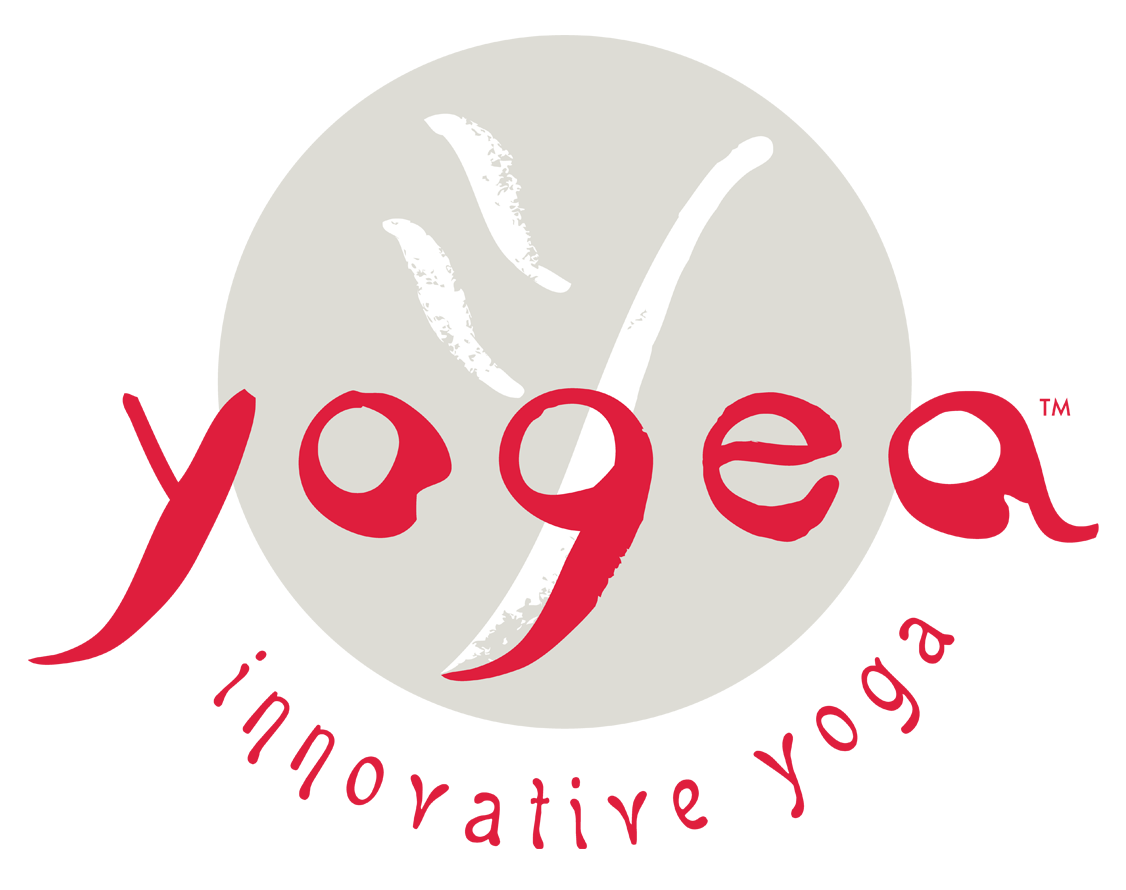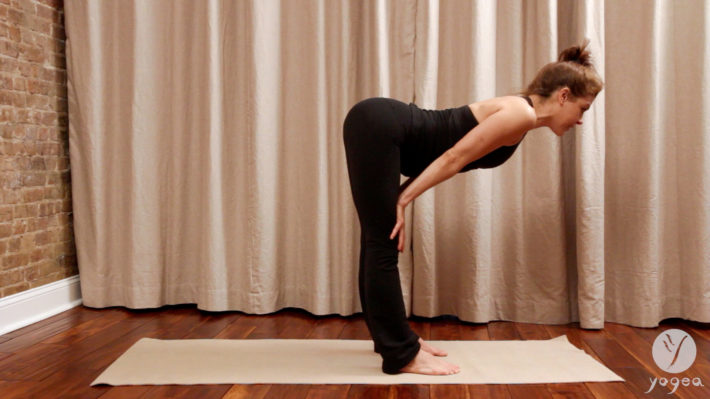Welcome to the Standing Forward Bends & Chair series of Yogea Asana Lab. This section will feature 6 variations of a standing forward bend and chair pose – Utkatasana (chair pose variation) Uttanasana (forward bend), Parivritta Uttanasana (Twisted forward bend), Ardha Uttanasana (flatback in forward bend); Ardha Uttanasana in Padanghustasana (flatback in forward bend with yogic toe lock), Uttanasana in Padahastasana (forward bend with hands under soles); Utkatasana in badha angali mudra (chair pose with threaded prayer pose.)
To prepare the body for deep forward bending work, the sequence kicks off with a simple flat back that opens up the hamstrings and allows the spine to engage from the tailbone to the crown of the head. Next, follows a standing chair pose variation (Utkatasana), where the hands press into the thighs while the knees are actively bent. This allows the hamstrings to get ready for a deep extension, and the lower back to lengthen over the legs, so the forward bend comes from the hinging of the hip creases and from the lengthening of the lower back. This pose strengthens the quadriceps, lengthens the claves, promotes spinal elongation and warms up the whole body for a deeper forward bend.
The second pose adds more suppleness to the hamstrings and Achilles tendons as it requires a twist in the lower back and torso and warms up the hamstrings for the deep fold. It increases flexibility in the hamstrings while decompressing the spine and massaging the sides of the waist.
The third pose is practiced in every “Surya Namaskara” (Sun Salute warm up) as it asks for an elongation of the spine forward and up before diving down. It is a preparatory pose that allows for expanding one’s range of flexibility and stretches gently the hamstrings, claves and lower back, while keeping the head in line with the torso.
The fourth pose naturally builds on the preparatory flat back variation and adds the yogic toe lock component. It opens the main meridians of the body so that “prana” or life force could flow unimpeded from the base of the spine to the crown of the head. It requires equal engaging of both legs and lengthening of the lower back to facilitate a hinge in the hips and allow for an abundant forward fold. Its final expression is when the head naturally releases into the shins, while the elbows bend, and the lower back and hip creases reach their maximum stretch.
The fifth pose adds an extra “hands under soles” clasp that massages all the trigger points in the body and boosts the function of the endocrine glands. It culminates into a deep swan dive, when the elbows bend again and the chest blankets the legs.
The sixth pose naturally sooths the deep elongation of the hamstrings by contracting them into a bound prayer chair pose, which requires a deep squat and stretch in the Achilles, an elongated spine and a deep stretch in the shoulder blades caused by the weaving of the arms around the knee creases into prayer pose. The pose strengthens the legs, opens the shoulders by massaging the scapulae and elongates the spine so the head becomes an extension of the torso.
The chair poses strengthen the thighs and lengthen the Achilles tendons, preparing the legs for a deeper fold. They stabilize the core and engage the whole body in an empowering and rigorous way. The forward bends calm the mind, cool the body’s temperature, sooth the hamstrings and calves and elicit the parasympathetic nervous system response, quieting the brain and cleansing the digestive tract. The whole series is best suited at the beginning of the practice as a warm up, or in the middle of the practice as a way to neutralize both sides and move into the climax segment.
Yogea Asana Lab is not a yoga routine and should be regarded solely as an educational platform to reinforce proper postural alignment and improve the quality of your practice. The approach is integrated as poses are grouped into different targeted categories. Each set of poses is demonstrated only on one side. The route of assuming poses and releasing through counter-poses is mapped clearly and slowly, allowing time for assimilation and grasping. The main objective is to guide you in and out of poses safely and smoothly, as well as to acquaint you with basic anatomical and energetic principles that weave the geometry of every asana. In turn, you will be able to perform the Yogea routines with clarity, precision and abandonment. As you follow the tips of proper alignment you will feel more stable, ready to deepen your practice and eager to transition gracefully from one stage to the next both on the mat and in life.


Leave a Reply